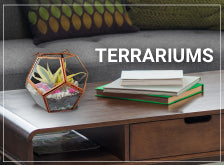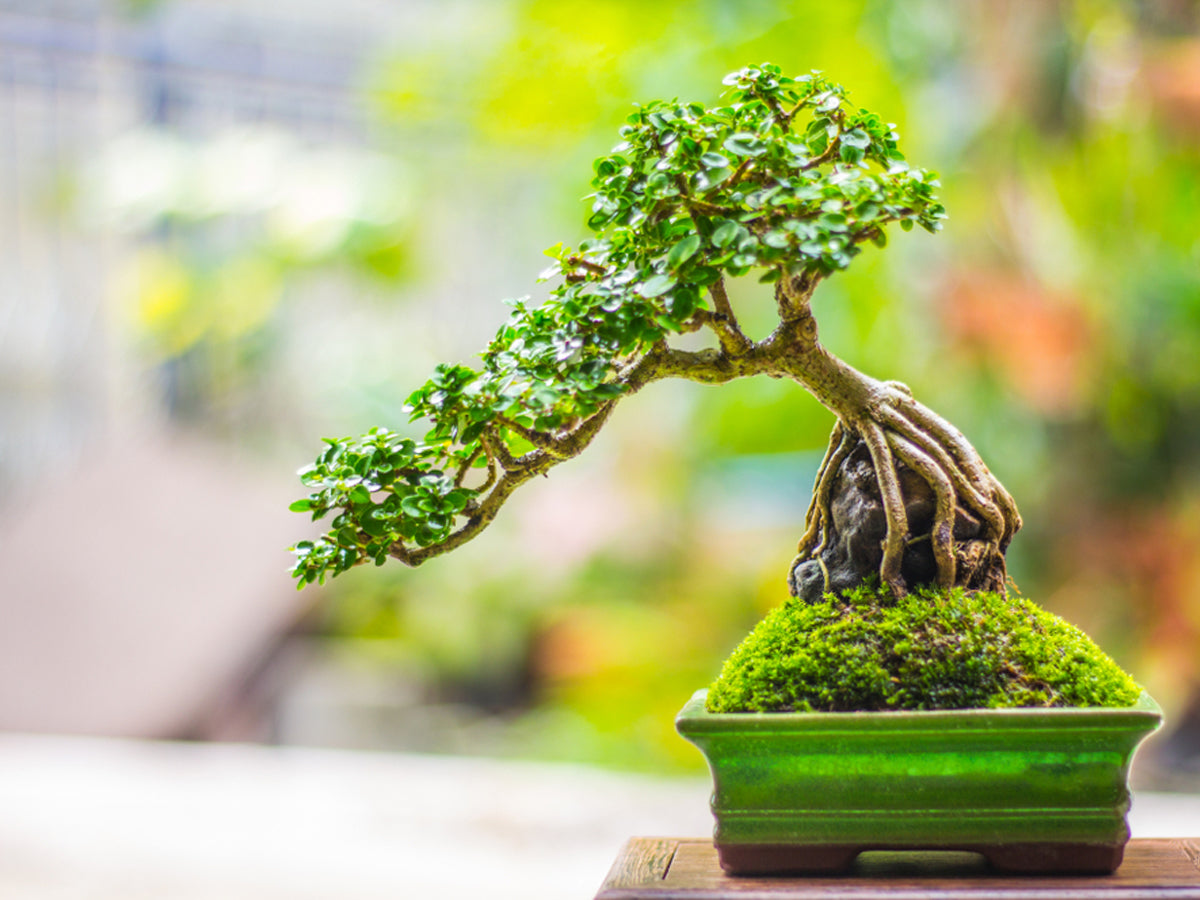How to Grow
12 Spectacular Bonsai styles to uplift your home décor
Can trees be grown in pots?
No. That’s because trees refer to woody trunks with lateral branches that grow to considerable heights, which pots cannot hold.
But someone must have mulled over this idea of a world where perennial trees can be grown in pots or containers. This art form has existed since the 7th century and is known as bonsai.
The literal translation of bonsai is "planted in a container." Bonsai is the art of growing decorative, artificially dwarfed trees in pots.
So, where did bonsai come from?
This art form was inspired by a traditional Chinese horticultural technique that was partially revived by Japanese Zen Buddhism.
What is the purpose of growing Bonsai?
The goal is not the production of food or medicine, but rather the enjoyment of the audience and the grower's imagination.
There are numerous bonsai styles, and we will discuss the following in today's blog:
- Formal upright
- Informal upright
- Slanting
- Semi-cascade
- Full cascade
- Root over rock
- Broom
- Forest
- Weeping
- Raft
- Double trunk
- Exposed root
So, let’s get started then.
Bonsai styles that wins the heart & spruce up home
Styling is everything when it comes to a bonsai. They are mostly kept at home to draw attention from visitors and to uplift the décor. Among all non-living objects, they add a splash of life to a home. There are various styles of bonsai found worldwide. Here is a selection of 11 such cutting-edge styles that would jazz up your home and win the hearts of people.
Formal upright – Chokkan
This is the most basic of all bonsai styles, and it's also the most visible.It reminds you of trees growing in your garden. The branches grow uniformly around the upright trunk, thinning somewhat as they ascend to the top.
The top of the tree is narrower than the base. The branches are spaced evenly to create a sense of depth that is pleasing to the eyes.
Informal upright – Moyogi
An informal upright bonsai style is a formal straight style in the shape of an "S." As is customary, the trunk is thicker than the top. The large trees you observe in your immediate surroundings are consistent with this design. The tree's "S" shape is likely the result of the trunk of the tree being broken by weather-related disasters such as rain, storms, snow, etc. Compared to the traditional upright bonsai style, it appears more realistic.
Slanting – Shakan
As the name suggests, the trees in this style are bent drastically to one side. The tree appears to have been bent to one side by the power of wind or water. These trees have a stronger root system to balance the weight on the other side because of their slanting structure.
Full cascade – Kengai
A full cascade bonsai style is an art lover’s visual treat. You might want to award this style's innovator with a crown of honor. It looks like a tree is growing over a waterfall. The trunk of the tree remains downward, and the branches are pruned in such a way that they give you the visual impression of a waterfall. Because the nature of a tree is to grow upwards, it is often difficult for an artist to achieve this look. Therefore, a tall pot is necessary to maintain this style of bonsai.
Semi-cascade – Han-Kengai
This one is quite similar to the full cascade style of bonsai, but with a less angular growth of the trunk. The low angle makes this style look more realistic. Therefore, the branches should be clipped to cascade downward, but not as severely as in the prior method. In this design, the tree extends past the pot's rim, and its trunk curves downward but not all the way to the ground.
Root over rock – Seki-Joju
Imagine a tree seed falling into a small crack in a rock and finding enough soil to survive; how would it grow? It may grow in two ways. Either it would find its way out or grow between the layers of soil and moss over the rock. Another possibility is that the roots gradually encircle and grow over the rock to the soil below, partially wrapping it. This style is achieved by bonsai growers by spreading the roots over a rock and letting them grow. It is heavenly to look at nature's beauty this way.
Broom – Hokidachi
This design resembles a broom used for housecleaning, as the name would imply. Although the design is relatively similar to the formal upright style, it has a much bushier and more circular appearance overall. The appearance of a broom is created by carefully pruning the branches so that they curve upwards and outwards. This style is achieved mostly on deciduous trees, which have multiple branches originating from the same point.
Forest – Yose-Ue
Like a small forest, here in this style, you will see a group of five or six trees. Trees of varying sizes are taken for this purpose. The smaller trees are positioned in front while the larger trees are kept behind. The branches of the smaller trees are pruned regularly so that they don’t block the view of the larger trees. To create a scalene triangle-shaped canopy, the trees are positioned at various distances from one another.
Weeping – Shidarezakura
This bonsai design is pretty distinctive. The tree's name may have originated from the feeling that it is weeping. Weeping willows and cherries are the frontrunners for this style of landscaping. They are typically located close to lakes and streams. Each branch must be wired by the artists to bend upward and then downward, simulating weeping.
Raft – Ikadabuki
A clump of trees growing on top of a log is how the raft style is intended to appear. The branches of the trees are pruned in such a way that they cascade over the edges of the log, and the roots of the trees are visible on the log's surface. It is quite an interesting style, resembling a small grove.
Double trunk – Sokan
You get two trees in one tree—yes, that’s the specialty of this unique bonsai style. In this design, a single tree is produced by combining the growth of two distinct trees with various diameters. As a result, the base of the tree is sprouting two trunks, with no branches allowed to grow in between them. The smaller tree's branches have been pruned so that they do not impede the view of the larger tree.
Exposed root – Neagari
Tree roots are supposed to stay buried in the ground, right? In this distinctive bonsai design, the roots are visible from the outside. A tree may be uprooted by rain, storms, or any other type of extreme natural event, eventually exposing its roots. That idea may have served as inspiration for the bonsai artists who created this style. It exudes unmatched beauty.
There are many more styles of bonsai, and each one of them is exquisite. Wherever you keep them, whether in the living room or the guest room, they will improve the overall appearance of your house. To bring more life to your home, decorate it with any of these unique styles of bonsai.
FAQs related to Bonsai
How many types of bonsai styles are there?
There are five basic styles of bonsai, namely, formal upright, informal upright, slanting, full cascade, and semi-cascade. All other styles are modifications based on these five basic styles.
Is bonsai a tree or a style?
In simple terms, bonsai refer to trees but in miniature versions that are grown in pots and kept indoors, unlike big trees outside. This is an old Japanese art form that stylizes the shape of a tree for visual pleasure.
Is bonsai from Japan?
Bonsai is a Japanese art form of growing trees in containers or pots that has been developed from the traditional Chinese art form of penjing.
Is bonsai lucky?
As per Feng Shui beliefs, bonsai is believed to bring good luck and harmony into your life. But the trick is that you have to get it as a gift from someone.
Are bonsai difficult to care for?
If you follow the instructions provided by the grower, it is not so difficult to maintain bonsai. Watering, placement, fertilizing, and repotting must be done in time to care for bonsai.



